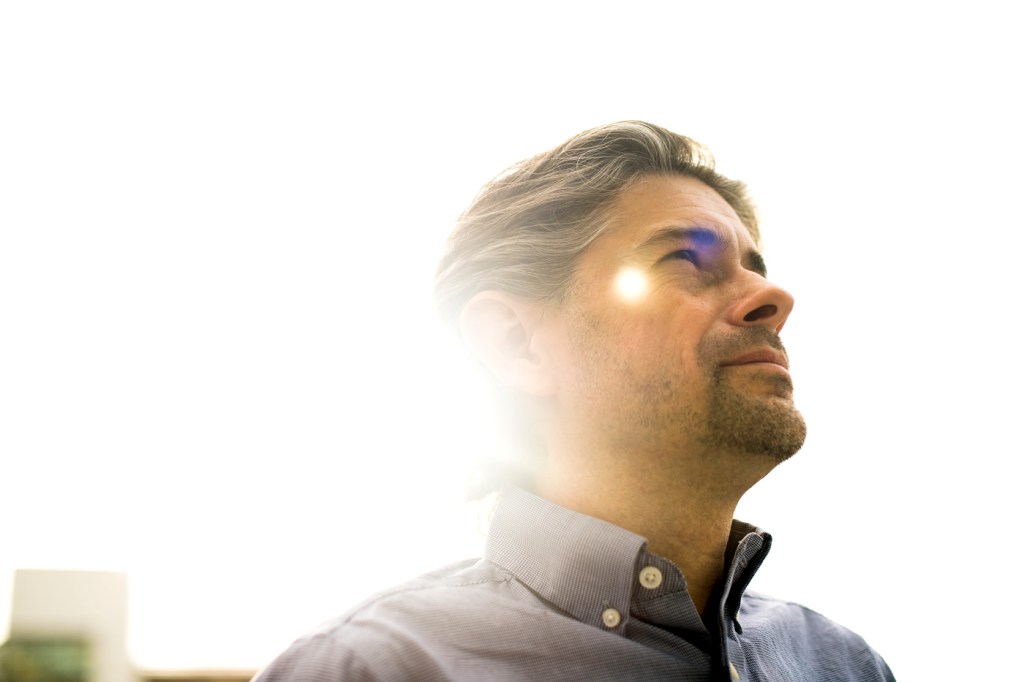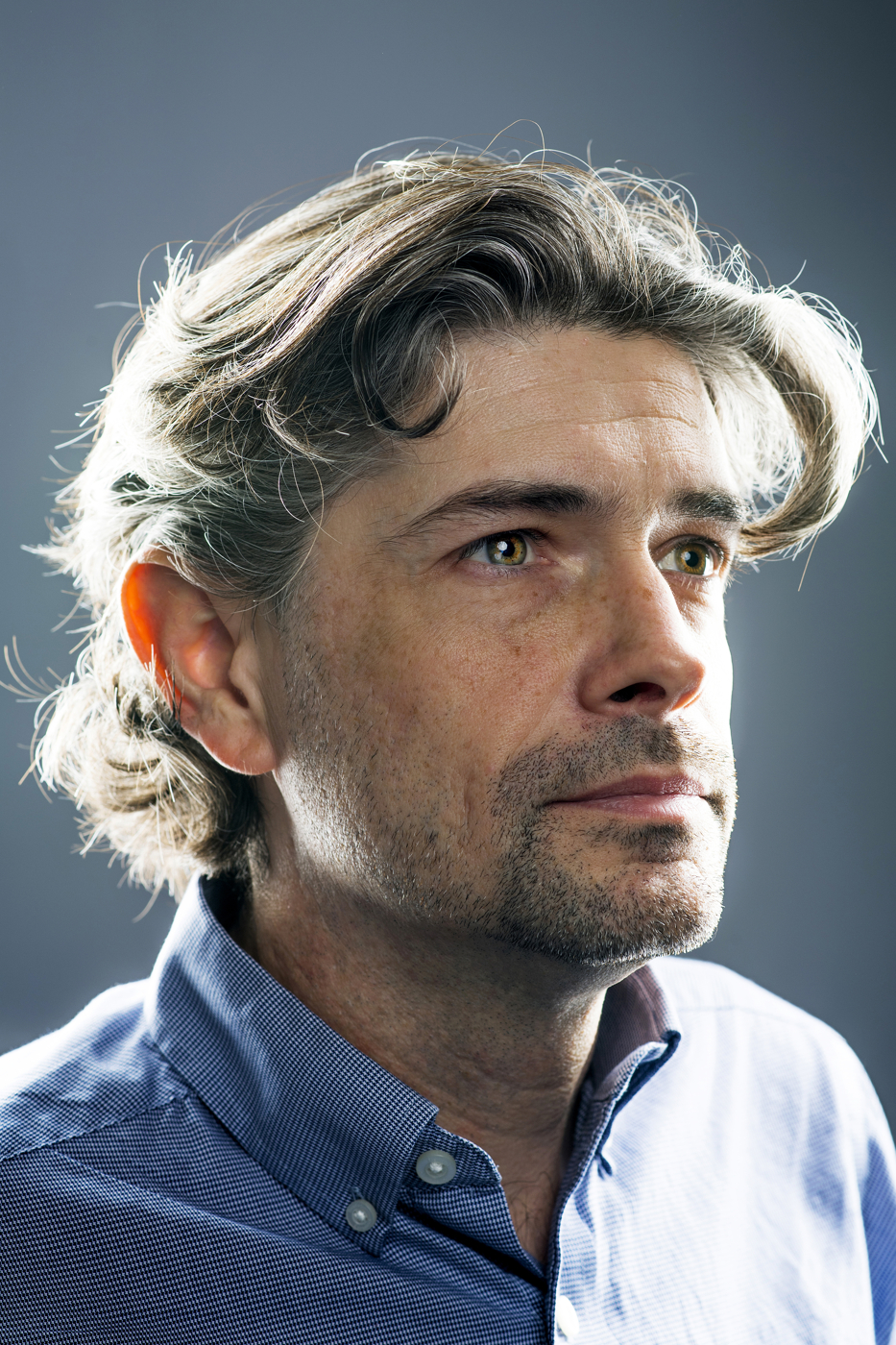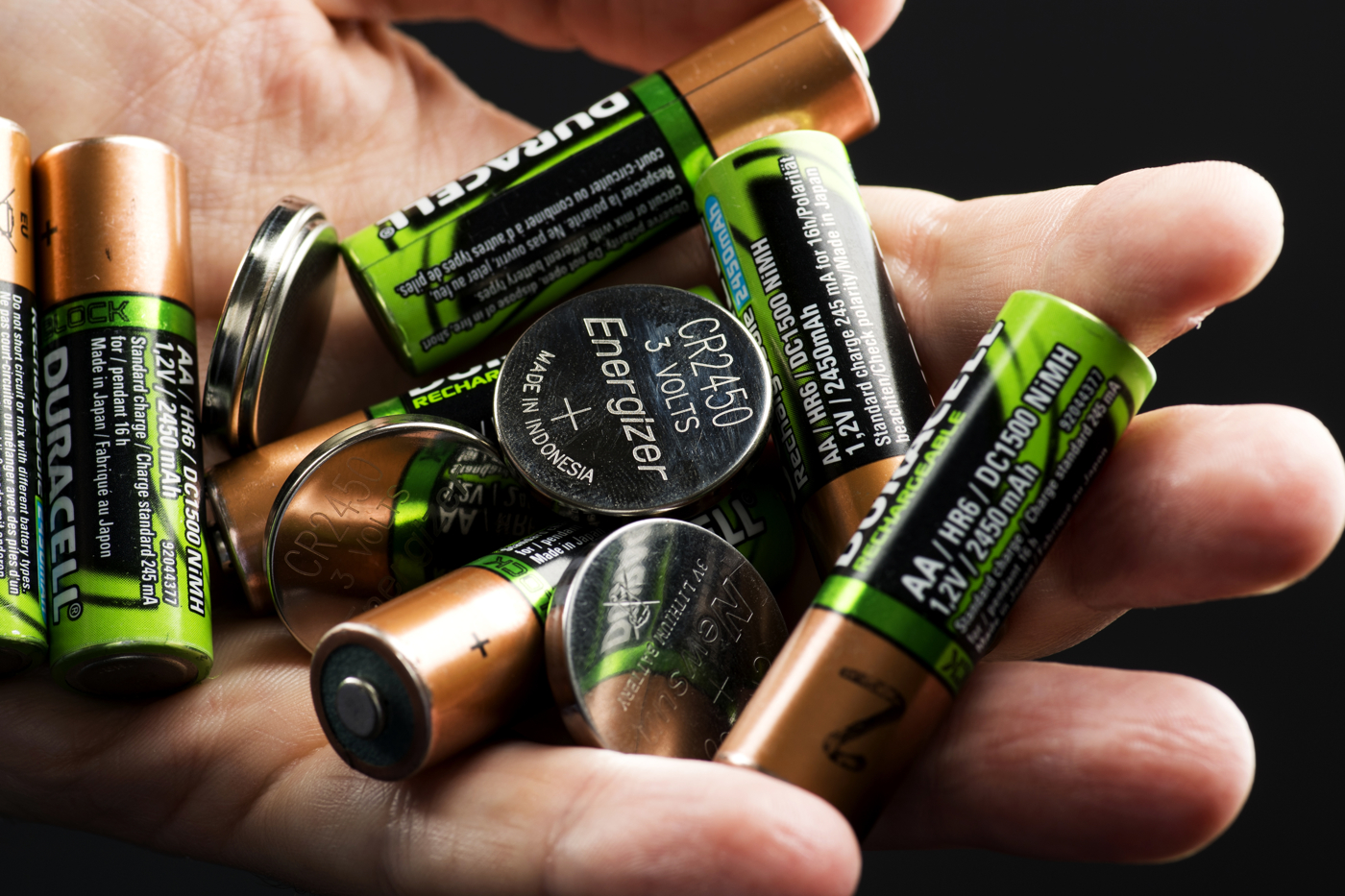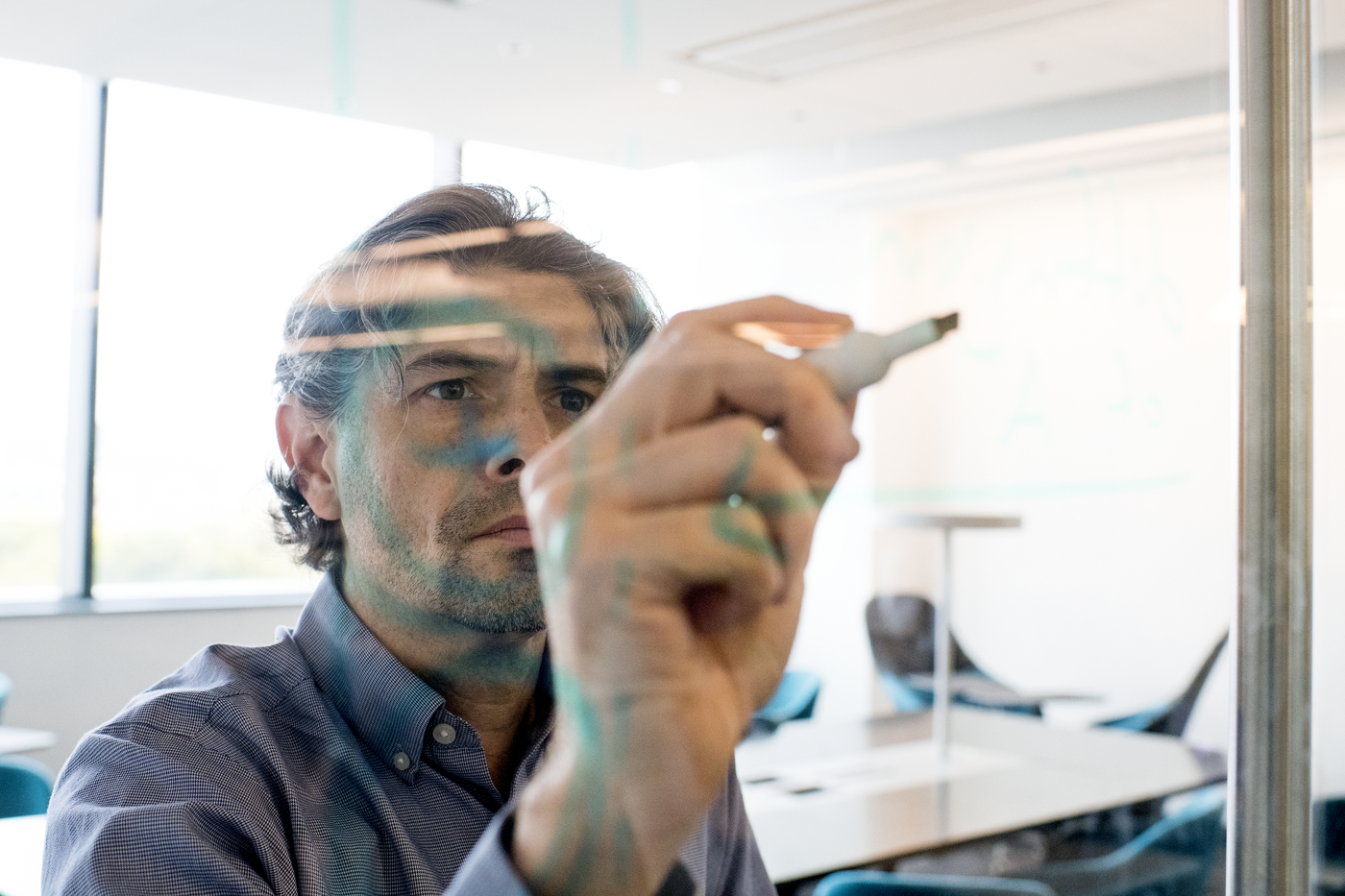The battery whisperer

Batteries, says electrochemist Joshua Gallaway, are essential to our everyday lives in ways they weren’t decades ago. Small batteries run our computers and cellphones, while huge batteries could power electric grids. Yet, the chemistries and reactions taking place within batteries are still somewhat mysterious, he explains.
Understanding how batteries work—and what will make them run better and longer—is the crux of his research.
“Think about it this way,” says Gallaway, DiPietro Assistant Professor of Chemical Engineering, who joined Northeastern’s faculty this fall. “You get really bummed out when the battery used to power your phone all day degrades, and now you have to charge it up midday or carry a spare. This is something you want to engineer around, to keep that from happening. And it ultimately comes down to the physical and chemical changes to the materials inside the batteries. There’s something happening to cause that, and I study those things.”
I became an electrochemist because sustainable energy is the most important problem to solve in our time.
Joshua Gallaway
DiPietro Assistant Professor of Chemical Engineering
Gallaway’s relentless interest in batteries extends beyond his research. “I have very specific ways I treat batteries in my own life,” he says. He keeps them charged as much as possible and always plugs them in when he gets home from work. In his view, it’s better to let them sit in a charged state than a discharged state. “I think I get longer battery life,” he says.
In fact, his fiancée calls him “the battery whisperer.”
Examining the mysteries of batteries
Gallaway comes to Northeastern from City College of New York, where he worked for eight years as a senior research associate. Much of his most recent work has focused on new ways to build rechargeable batteries for use in large-scale power grids. One particular approach he’s explored is using zinc-manganese dioxide as a cheaper and safer alternative to lithium ion, which Tesla has notably focused on to build large-scale grid storage.
Despite the ubiquity of batteries in society today, there are still mysteries surrounding the phenomena happening inside of them, Gallaway explains. And if you try to open them up to explore what reactions are taking place, you risk exposing them to oxygen and other environmental factors that will make your investigation moot.



What you need, Gallaway said, is a synchrotron—a large particle accelerator facility—that generates intense beams of X-rays that can be used to observe what’s happening inside batteries. As part of his work at CCNY, Gallaway was among the first researchers to use one of the beamlines at a new synchrotron facility at the Brookhaven National Laboratory in New York, after it was completed in 2015.
Gallaway will continue this type of research at Northeastern. He’s currently designing his lab, where he will build—and teach his students to build—new types of batteries and battery materials, and use them and study their chemistries. This fall he’s teaching “Conservation Principles in Chemical Engineering,” which he described as a chemical engineering intro course for second-year students.
Gallaway’s interest in batteries stems from his broader interest in sustainable energy. He began studying electrochemistry as a doctoral student at Columbia University. “At that time I had a very strong desire to help the world,” he explains, and in the early 2000s fuel cells and the hydrogen economy were getting more attention in the public sphere. He focused his dissertation on biofuel cells research, and his work shifted to batteries when he joined CCNY.
“I became an electrochemist because sustainable energy is the most important problem to solve in our time,” he says.
Northeastern a familiar new home
When Gallaway arrived at Northeastern this year, he was already familiar with the university in several ways. For one, in previous work he used a mathematical model of a battery developed by Elizabeth Podlaha-Murphy, who at the time was a chemical engineering professor at Northeastern. During a later visit to Boston, Gallaway asked Podlaha-Murphy to meet for coffee, explaining their shared research interests and noting that he’d benefitted from her research, which she produced for her dissertation. Talking shop with Podlaha-Murphy in that meeting piqued Gallaway’s interest in Northeastern.
What’s more, Gallaway also understands the value of Northeastern’s experiential model, particularly the co-op program. As an undergraduate at Case Western Reserve University, he did a co-op at the Owens Corning Science and Technology Center in Ohio, where he assisted a scientist in his research. “It was the single most important thing I’ve ever done in my career,” he said. “I wasn’t sure what I’d do in chemical engineering until that co-op. It really showed me how to do research and how different it was from classroom learning. Ever since then I’ve been combining the two.”





